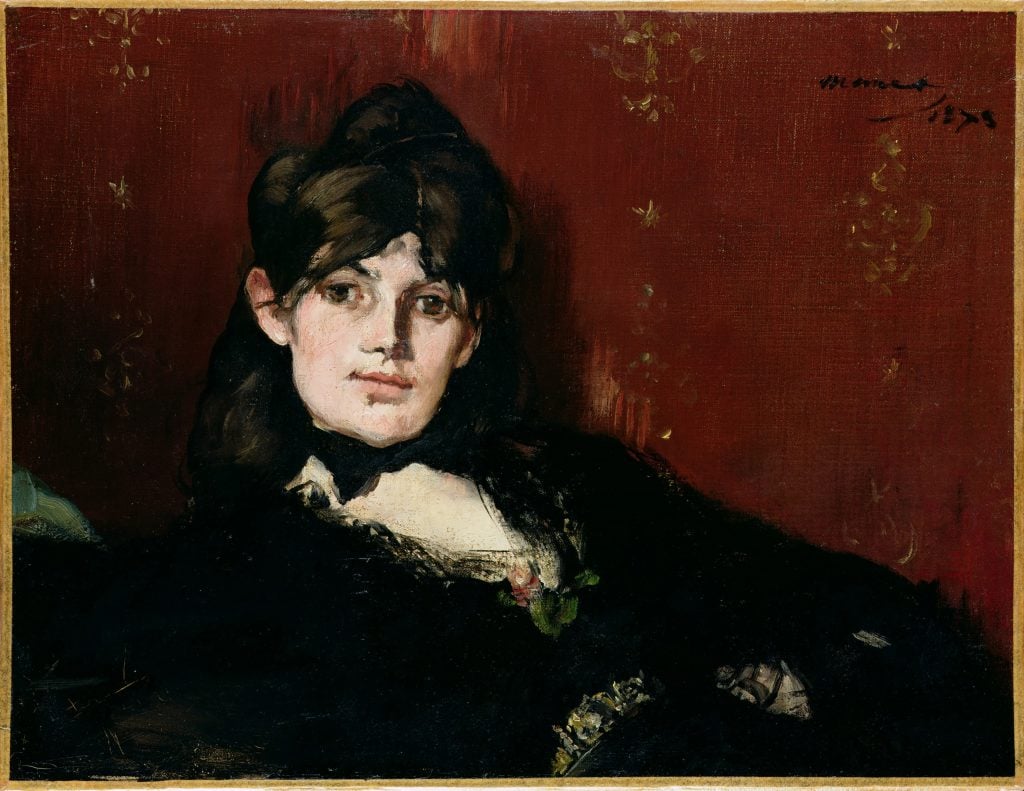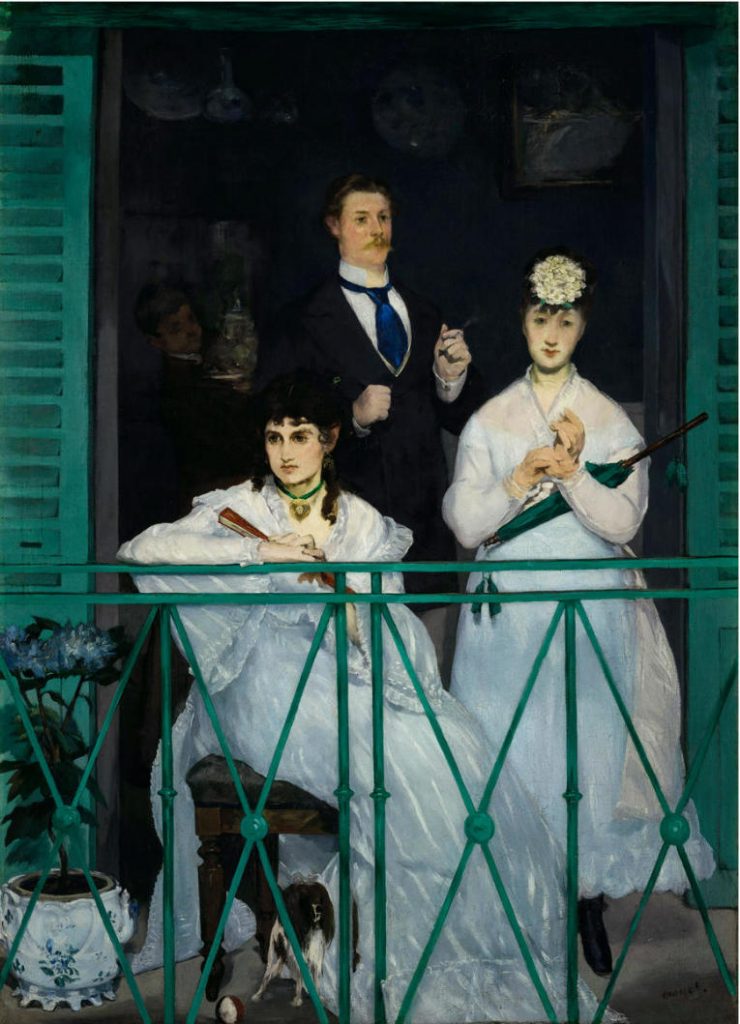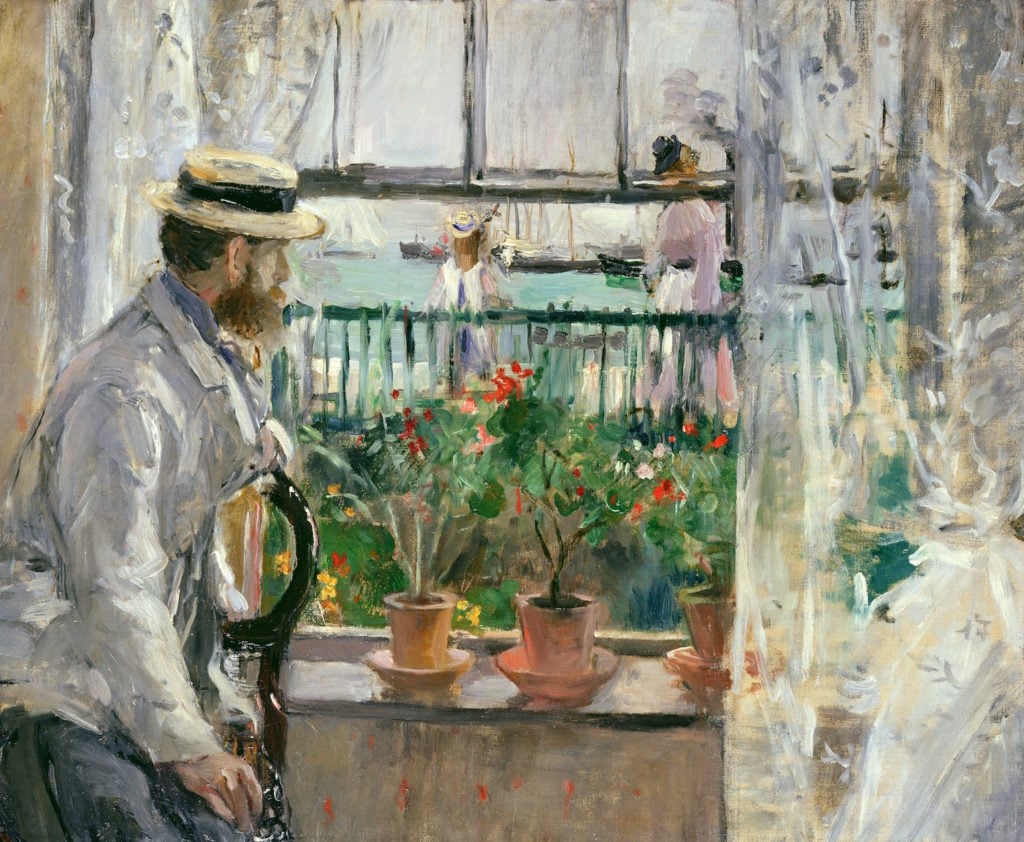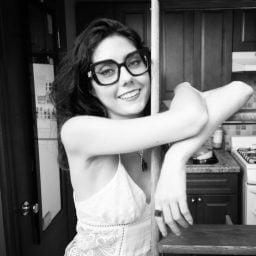Art World
Art Bites: Manet and Morisot’s Creative—and Complicated—Bond
The pair of impressionists had an intense relationship and were possibly lovers.

When institutional acclaim plucked French impressionist Berthe Morisot from relative obscurity six years ago, the tradition of situating her in relation to famed male colleagues like Renoir and Degas fell out of fashion. However, Édouard Manet did leave an indelible impact on her as a person and artist. Morisot modelled for Manet nearly a dozen times between their first meeting in 1868 and 1874, when Morisot married his brother Eugene. Before their union though, Manet sent Morisot violets, paintings, and letters—one of which, miraculously, appeared in an exhibition back in 2019. The apparent closeness of their relationship, coupled with Morisot’s letters to her sister, led many to believe that the artists were in love.

Édouard Manet, Berthe Morisot with a Bouquet of Violets (1872). Collection of Musée d’Orsay.
Morisot grew up in a bourgeois household. Her mother, who was distantly descended from famed Rococo painter Jean-Honoré Fragonard, encouraged Morisot and her sister Edma to take painting classes. Their unique talents so astounded their instructor that he recommended the two become professional painters.
Morisot showed at the Paris Salon in 1864. One spring, four years later, she and her sister were seated studiously behind easels at the Louvre when the painter Henri Fantin-Latour brought Manet to meet them. By that point, Manet had already achieved notoriety with the debut of his Le Déjeuner sur l’herbe (1863-64). Like Fantin-Latour, he was quickly taken with the 27-year-old student.

Edouard Manet, The Balcony (1868). Photo: Sylvie Chan-Liat. © RMN-Grand Palais (Musée d’Orsay).
Manet obviously liked her work. He declared a harbor scene she painted a masterpiece, kept three works by Morisot in his bedroom, and bought her an easel one Christmas. “I think he has a decidedly charming temperament, I like it very much,” Morisot wrote to her sister in 1869. But, Manet was married, and Morisot wanted to remian “respectable”.
They remained close—she vying for his affections, and he, many believe, channeling his ardor through the numerous portraits he painted of her, starting with The Balcony (1868-69). “When [Manet] paints Victorine, he paints her as a beautiful object,” one contemporary noted, referencing Manet’s most famous muse by that point, “when he paints Berthe, he paints her with love and tenderness.” Such discussions have generated entire studies of Manet’s portraits of Morisot.

Berthe Morisot, In England (Eugène Manet on the Isle of Wight), 1875. Courtesy of the Musée Marmottan-Claude Monet, Fondation Denis et Annie Rouart, Photo by Erich Lessing/Art Resource, NY.
Whether or not the two ever became lovers is a matter of wide speculation. New Criterion says they burned their correspondence when she wed. However, Morisot’s letters with her sister show their flirtation was not always a delight. Manet soon took on his only paying student, a 20 year old girl named Eva Gonzalez, and tried painting her too, holding her work and Morisot’s in a perpetual competition that inflamed the latter’s known insecurities. He demonstrably held the capacity to both inspire and paralyze the otherwise brazen talent.
Morisot rebuffed her mother’s persistent matchmaking, but she obliged Manet’s eventual suggestion that she marry his brother. “I have found an honest and excellent man who, I believe, sincerely loves me,” Morisot wrote to her sister after their wedding.
“I have entered into the positive life after having lived for a long time in my chimeras.” Eugene supported Marisot without reservation, lovingly serving as her manager throughout the rest of her career.
What’s the deal with Leonardo’s harpsichord-viola? Why were Impressionists obsessed with the color purple? Art Bites brings you a surprising fact, lesser-known anecdote, or curious event from art history. These delightful nuggets shed light on the lives of famed artists and decode their practices, while adding new layers of intrigue to celebrated masterpieces.





